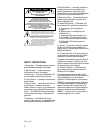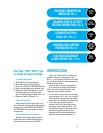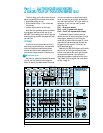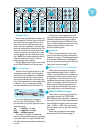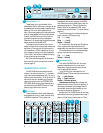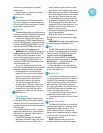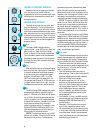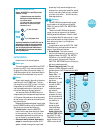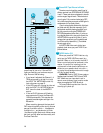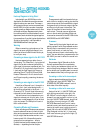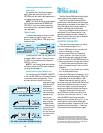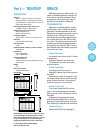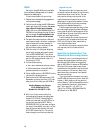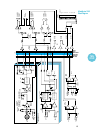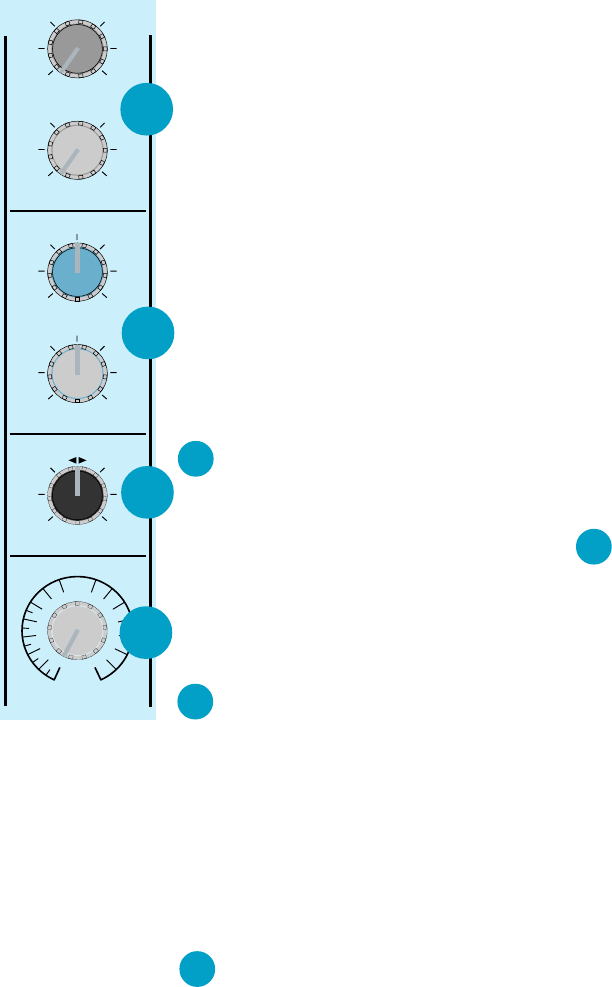
8
THE REST OF THE STORY: CONTROLS
As we pointed out at the start of this sec-
tion, the controls on the MS 1202 are
organized into two distinct areas: eight chan-
nel strips (four mono and four stereo) and
an output section.
CHANNEL STRIP CONTROLS
The eight channel strips look alike, and
function identically. The only difference is
the four on the left are for individual mics or
mono instruments and have more gain avail-
able, while the next four are for either stereo
or mono line-level sources. (Each of the line-
level channel strips is actually two complete
circuits. The controls are linked together to
preserve stereo.)
Gain
The rotary GAIN knob controls the
channel’s level… from OFF to Unity Gain (no
gain or loss) to +20dB. You’ll feel a slight
“click”, or detent, at the straight-up position.
This is to make it easier to use the channels
predictably: when the control is at the detent,
you’re set for Unity Gain; no attenuation and
no amplification.
Pan
PAN adjusts the amount of channel signal
sent to the left and right outputs. These con-
trols work as pan pots on all eight channel
strips as long as you’re using mono signal
sources (microphones, LINE 1–4, or the
LEFT-only mono inputs of channels 5–12).
You can also use Channel 5–12 PAN controls
to “skew” stereo inputs left or right, just like
the Balance control on your stereo receiver.
EQ
The MicroSeries 1202 has bass and treble
shelving equalization at musically useful
points — LO boost/cut at 80Hz and HI boost/
cut at 12kHz. By shelving we mean that the
circuitry boosts or cuts all frequencies past
the specified frequency, instead of just creat-
ing a frequency bump or dip the way a
graphic equalizer would. For example, rotat-
ing the MS 1202’s LO EQ knob 15dB to the
right boosts bass starting at 80 Hz and con-
tinuing down to the lowest octave.
LO EQ. This control gives you up to 15dB
boost or cut at 80Hz. The circuit is flat at the
detented center position. This frequency
U
PA N
LR
EQ
–15 +15
LO
–15 +15
HI
+15
1
OO
+15
2
OO
U
GAIN
1
+20
OO
AUX
U
18
17
16
15
15
16
17
18
represents the punch in bass drums, bass
guitar, fat synth patches, and some really
serious male singers. Cutting slightly at this
frequency can do wonders for muddy tracks
and boomy room acoustics; cutting more
drastically can help fix poppy microphones.
HI EQ. This control gives you up to 15dB
boost or cut at 12kHz, and is also flat at the
detent. Use it to add sizzle to cymbals, and
an overall sense of transparency, or edge to
keyboards, vocals and guitar. Turn it down a
little to reduce sibilance, or to fix hiss on a
tape track.
You can also screw things up royally. We’ve
designed a full 15dB of boost and cut into each
equalizer circuit, because we know profession-
als occasionally need that range. But if you max
the EQ’s on every input you’ll get mix mush. If
you’re using the MS 1202 for recording, equal-
ize subtly and use the left sides of the knobs
(cut), as well as the right (boost).
AUX Sends
These unbalanced outputs route a portion
of each channel signal out to another source
for processing or sub-mixing. These outputs
are controlled by the AUX 1 and AUX 2 knobs.
These are more than just effects sends.
They can be used to generate separate mixes
for recording (or “mix-minuses” for broad-
cast), or as monitor mixes.
• The AUX sends are post-gain control,
post-equalizer. That is, they follow the EQ
and level adjustments for each channel.
• PAN has no effect on the sends.
• All sends range from full “off” at the
extreme counterclockwise position to
Unity with their channel gain controls at
the center detent position. There’s an
extra 15dB of gain once you pass the
detent. However, you should be careful
not to overload whatever device you’re
sending signal to.
• On Channels 1–4 only, the AUX controls
can be changed to pre-fade/pre-equalizer.
See page 9 “MS 1202 Modification” for
further details.
• Channel 5–12 AUX pots mix the mono
sum of their respective stereo inputs.
• We recommend going into a stereo reverb
in mono and returning in stereo. We have
found that most “stereo” reverb’s second
input just ties up an extra AUX send and
adds nothing to the sound.




